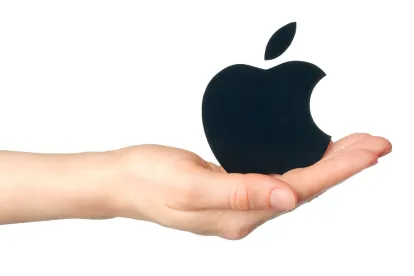Judge Cites 'Associated' Anticompetitive Conduct Claims
It’s a case that challenges the limits of the “freedom of design” usually enjoyed by companies accused of product design changes alleged to harm competition. Ordinarily, a design change is not the kind of conduct that runs afoul of the antitrust laws, but on March 21, U.S. Judge Jeffrey S. White from the Northern District of California denied Apple Inc.’s motion to dismiss an antitrust case brought against it by AliveCor Inc. The suit alleges that Apple unlawfully maintained its monopoly in the market for heart rate analysis apps by updating WatchOS, the Apple Watch operating system on which AliveCor’s heart rate analysis app runs (AliveCor, Inc. v. Apple Inc., No. 21-cv-03958-JSW, N.D. Calif.).
Heart rate analysis apps analyze the user’s heart rate in real time using a sensor close to the user’s wrist and determine whether the user’s heart rate is normal or irregular. The app runs constantly while the device is worn and alerts the user when a situation arises requiring an ECG recording and medical analysis. Until mid-2019, AliveCor sold an electrocardiogram-capable wrist band, called KardiaBand, for the Apple Watch and related WatchOS software that analyzed readings from the band. AliveCor claims that its products—the ECG-wristband hardware and software and its heart rate analysis app—“helped change the perception of the Apple Watch from an accessory to a personal health monitoring tool.” AliveCor discontinued its KardiaBand product several months after Apple launched its own hardware and software ECG feature for the Apple Watch Series 4.
AliveCor calls its heart rate monitoring app “SmartRhythm.” According to AliveCor, when sales of SmartRhythm took off Apple was inspired to announce an update to WatchOS with its own heart monitoring app designed to exclude AliveCor from the U.S. market for WatchOS heart rate analysis apps.
SmartRhythm works by using data from the Apple Watch’s heart rate algorithm. According to the complaint, Apple’s update to WatchOS altered the heart rate algorithm in a way that prevents third-party developers from being able to detect heart rate fluctuations and irregularities. As a result of these changes, SmartRhythm could not provide accurate heart rate analysis, and AliveCor removed it from the market.
Consequently, Apple is a monopolist in the WatchOS heart rate analysis app market, which AliveCor claims Apple is maintaining with exclusionary design changes to WatchOS, in violation of Section 2 of the Sherman Act, California’s Unfair Competition Law, and Section 17200 of California Business and Professions Code.
The court denied Apple’s motion to dismiss AliveCor’s monopolization claim in what it characterized as the “[single brand] aftermarket for WatchOS apps.” Applying the factors enumerated by the court in Newcal Indus., Inc. v. Ikon Office Sol., 513 F.3d 1038, 1044 (9th Cir. 2008), the court found that the WatchOS app aftermarket was wholly derivative from the primary smartwatch market, the alleged restraint applied only to the aftermarket, Apple’s aftermarket power was not obtained through contract terms reached in the primary market, and that competition in the smartwatch market does not discipline anticompetitive practices in the WatchOS app aftermarket. Accordingly, the court ruled that AliveCor’s market definition met the Newcal standards for a “single product” relevant market.
Apple argued that a company that improves a product to the benefit of consumers does not violate antitrust laws “absent some associated anticompetitive conduct,” citing the leading “freedom of design” case of Allied Orthopedic Appliances Inc. v. Tyco Health Care Group LP, 592 F.3d 991, 998-99 (9th Cir. 2010). The court quoted the holding of Allied: “If a monopolist’s design change is an improvement, it is necessarily tolerated by the antitrust laws, unless the monopolist abuses or leverages its monopoly power in some other way when introducing the product.”
Apple argued that its update to WatchOS was purely a design change that benefitted users, with no associated anticompetitive conduct. It observed that AliveCor hadn’t established that consumers use Apple’s app instead of some third-party app, or that Apple rejected any third-party apps, or that no other third-party heart apps are available to Apple Watch users. But the court rejected those arguments, noting that Apple failed to provide any legal authority that would require such allegations.
Apple ignored AliveCor’s allegations that Apple abused or leveraged its monopoly power “in some other way” by changing its heart rate algorithm to make it effectively impossible for third parties to inform a user when to take an ECG. AliveCor contended that Apple’s updated heart rate algorithm, which was pushed out to all earlier Apple Watch models, did not improve user experience. Its purpose was to prevent third parties from identifying irregular heart rates and offering competing apps based on that data. “These allegations present the type of ‘associated conduct’ that makes product design changes cognizable under antitrust law. Plaintiff’s allegations plausibly establish that Apple’s conduct was anticompetitive,” Judge White held. A case management conference is set for May 20.
Commentary
It is truly difficult to see how some separate, “associated” conduct by Apple other than its design change to WatchOS violates Section 2. It seems more straightforward to consider the design change itself to be a cognizable anticompetitive act. It may be time to drop the fiction maintained in Allied v. Tyco that design changes are “never” antitrust violations unless accompanied by some “other” conduct. Here, Apple has created the market itself in the form of an OS platform used by millions of consumers who depend on it to access all manner of competing complementary products. Under those circumstances, it should be uncontroversial to hold a platform operator liable under the antitrust laws for design changes that exclude competitors or foreclose participants from the market, without indulging in the fiction of “associated” conduct.




 />i
/>i

